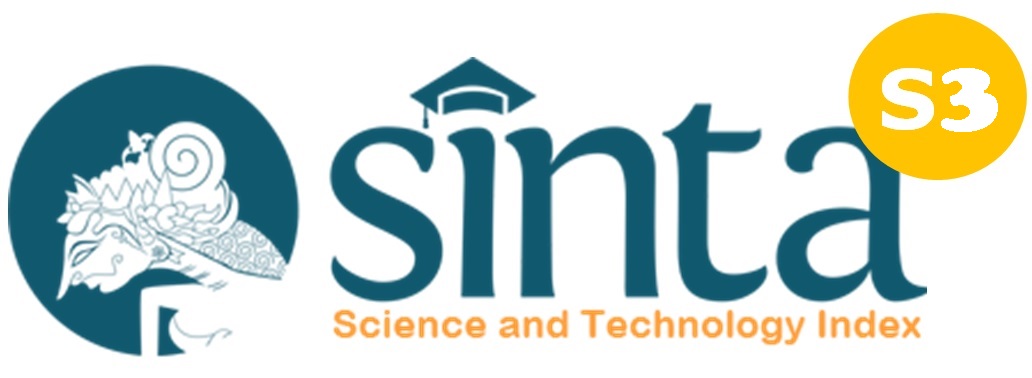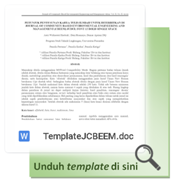Heavy Metal Accumulation in Rice (Oryza Sativa L.) from Irrigation Water Sources of Citarum River and Tarum Barat Canal to Public Health Risk
DOI:
https://doi.org/10.23969/jcbeem.v8i2.18052Keywords:
Heavy Metals, Bioaccumulation, Rice Fields, Health Risk AnalysisAbstract
Food safety are needed in Karawang District, which is the second largest rice producing area in West Java, the Citarum River water used as an irrigation source is polluted by industrial waste. This study aims to identify the heavy metal content of paddy water, soil and accumulation of rice using polluted irrigation water sources that pose a risk to public health. Total of 60 samples from water,soil,rice were measured using Atomic Absorption Spectrophotometry (AAS) and analysed for bioaccumulation factors (BAF). The questionnaire results were used to calculate farmers' health risks using deterministic and probabilistic Monte Carlo. The concentrations of water and soil in the irrigated rice fields of the Citarum River (SCT) and the irrigated rice fields of the West Tarum Canal (STBT) were still below the permitted standards. The concentrations of Pb and Cr metals in rice in SCT rice fields were above the quality standards. BAF>1 indicates Cu metal in rice in SCT and STBT rice fields can accumulate heavy metals. The results show that Hazard Index or HI>1 indicates farmers in both rice fields have a noncarcinogenic risk with a contribution level of Hazard Quotient Cu of 57.71%-63.78%. Cancer risk of Cr metal showed that exceeds the acceptable value both deterministic and probabilistic approaches, thus indicating a carcinogenic risk to farmers in both study areas. Proper monitoring of soil and irrigation is needed with prevention of consumption of contaminated rice.
Downloads
References
Ahmed, M., Matsumoto, M., Ozaki, A., Thinh, N., & Kurosawa, K. (2019). Heavy Metal Contamination of Irrigation Water, Soil, and Vegetables and the Difference between Dry and Wet Seasons Near a Multi-Industry Zone in Bangladesh. Water, 11(3), 583. https://doi.org/10.3390/w11030583
Ashraf, U., Kanu, A. S., Mo, Z., Hussain, S., Anjum, S. A., Khan, I., Abbas, R. N., & Tang, X. (2015). Lead toxicity in rice: Effects, mechanisms, and mitigation strategies—a mini review. Environmental Science and Pollution Research, 22(23), 18318–18332. https://doi.org/10.1007/s11356-015-5463-x
Aziz, R. A., Yiwen, M., Saleh, M., Salleh, M. N., Gopinath, S. C. B., Giap, S. G. E., Chinni, S. V., & Gobinath, R. (2023). Bioaccumulation and Translocation of Heavy Metals in Paddy (Oryza sativa L.) and Soil in Different Land Use Practices. Sustainability, 15(18), 13426. https://doi.org/10.3390/su151813426
Dinas Lingkungan Hidup. 2022. Laporan Pengendalian Air. Kabupaten Karawang
Dinas Lingkungan Hidup. 2023. Laporan Hasil Pengujian Air Sungai.
European Union, Heavy metals in wastes. European Commission on Environment, 2002, http://ec.europa.eu/environment/waste/studies/pdf/heavy metalsreport.pdf
FAO.(1999). Guideline for Irrigation Water Quality. Ministry of Environment, Human Resource Development&Employment. General Notice no 617
FAO/WHO. (2002). Schedule 1 maximum and guideline for contaminants and toxins in food. Codex alimentarius-General
Standars for Contaminants and Toxins infood. Joint FAO/WHO Food Standars Programme, Codex Committee, Rotterdam, Reference CX/FAC 02/16
FAO/WHO. (2022). Working Document For Information And Use In Discussions Related To Contaminant. Codex alimentarius-General Standars for Contaminants and Toxins infood. Joint Fao/Who Food Standards Programme Codex Committee On Contaminants In Foods 15th Session, Rome, Italy, Reference CF/15 INF/01
Handayani, C. O., Sukarjo, S., Dewi, T., & Zu’amah, H. (2022). Logam Berat dan Probabilistik Penilaian Risiko Kesehatan Melalui Konsumsi Beras dari Lahan Sawah di Hulu Sungai Citarum. Jurnal Kesehatan Lingkungan Indonesia, 21(2), 225–234. https://doi.org/10.14710/jkli.21.2.225-234
Hasan, G. M. M. A., Das, A. K., & Satter, M. A. (2022). Accumulation of Heavy Metals in Rice (Oryza sativa. L) Grains Cultivated in Three Major Industrial Areas of Bangladesh. Journal of Environmental and Public Health, 2022, 1–8. https://doi.org/10.1155/2022/1836597
Jamal, M. R., Kristiansen, P., Kabir, M. J., & Lobry De Bruyn, L. (2023). Challenges and Adaptations for Resilient Rice Production under Changing Environments in Bangladesh. Land, 12(6), 1217. https://doi.org/10.3390/land12061217
Lakshmi, S., Suvedha, K., Sruthi, R., Lavanya, J., Varjani, S., & Nakkeeran, E. (2020). Hexavalent chromium sequestration from electronic waste by biomass of Aspergillus carbonarius. Bioengineered, 11(1), 708–717. https://doi.org/10.1080/21655979.2020.1780828
Leidel, N. A., Busch, K. A., & Lynch, J. R. (1977). Occupational Exposure Sampling Strategy Manual. Cincinnati: National Institute for Occupational Safety and Health
Lu, Q., Xiao, Q., Wang, Y., Han, B., Zheng, X., & Lin, R. (2021). Risk assessment and hotspots identification of heavy metals in rice; A case study in Longyan of Fujian province, China. Chemosphere, 270, Article 128626 https://doi.org/10.1016/j.heliyon.2022.e12429
Moelyo, M., Tisa, J., & Priadie, B. (2012). Pengaruh Kualitas Sedimen Dasar Terhadap Karakteristik Lingkungan Keairan, Studi Kasus: Saluran Tarum Barat. Jurnal Irigasi, 7(1), 59. https://doi.org/10.31028/ji.v7.i1.59-73
Ohio EPA. 2001. Soils Sampling Guide and Methodologies. US Environmental Protection Agency
Rasydy, L. O. A., Sylvia, D., & Zein, Z. A. (2021). Analisis Logam Berat pada Beras (Oryza Sativa L.) yang Ditanam di Daerah Industri Karet Mekar Jaya. Jurnal Farmagazine, 8(1), 66. https://doi.org/10.47653/farm.v8i1.535
Ren, Y., Lin, M., Liu, Q., Zhang, Z., Fei, X., Xiao, R., & Lv, X. (2021). Contamination assessment, health risk evaluation, and source identification of heavy metals in the soil-rice system of typical agricultural regions on the southeast coast of China. Environmental Science and Pollution Research, 28(10), 12870–12880. https://doi.org/10.1007/s11356-020-11229-6
Shah, S. Md. S., Munshi, M., Islam, Md. J., Mollah, Md. M. A., Zakir, H. M., & Salam, S. M. A. (2023). Pollution Assessment Of Selected Heavy Metals In Irrigation Water [Preprint]. In Review. https://Doi.Org/10.21203/Rs.3.Rs-2630617/V2
Satpathy, D., Reddy, M. V., & Dhal, S. P. (2014). Risk Assessment of Heavy Metals Contamination in Paddy Soil, Plants, and Grains ( Oryza sativa L.) at the East Coast of India. BioMed Research International,1–11. https://doi.org/10.1155/2014/545473
Shah, S. Md. S., Munshi, M., Islam, Md. J., Mollah, Md. M. A., Zakir, H. M., & Salam, S. M. A. (2023). Pollution Assessment of Selected Heavy Metals in Irrigation Water [Preprint]. In Review. https://doi.org/10.21203/rs.3.rs-2630617/v2
SNI 6989-2008 tentang air dan air limbah-bagian 58: Metoda pengambilan contoh air permukaan
SNI 6787: 2015 tentang Metode Pengujian Ph tanah dengan alat pH meter
Soil Environmental Quality Standards in China. (2018). GB15618; Ministry of Environmental Protection: Beijing, China.
US. EPA (1989) Risk assessment guidance for superfund volume I: human health evaluation manual: (part A). Office of Soild Waste and Emergency Response, Washington, DC
U.S.EPA. (2023). Appendix F. Description of Equations Used to Calculate the BCF, BAF, BMF, and BSAF Values. https://www.epa.gov/pesticide-science-and-assessing-pesticide-risks/kabamversion-10-users-guide-and-technical-3
Xiao, R., Guo, D., Ali, A., Mi, S., Liu, T., Ren, C., Li, R., & Zhang, Z. (2019). Accumulation, ecological-health risks assessment, and source apportionment of heavy metals in paddy soils: A case study in Hanzhong, Shaanxi, China. Environmental Pollution, 248, 349–357. https://doi.org/10.1016/j.envpol.2019.02.045
Yu, H., Chen, F., Ma, J., Khan, Z. I., Hussain, M. I., Javaid, I., Ahmad, K., Nazar, S., Akhtar, S., Ejaz, A., Sohail, M., Nadeem, M., Hamid, Y., & Ur Rahman, M. H. (2022). Comparative evaluation of groundwater, wastewater and canal water for irrigation on toxic metal accumulation in soil and vegetable: Pollution load and health risk assessment. Agricultural Water Management, 264, 107515. https://doi.org/10.1016/j.agwat.2022.107515
Zhao, Y., Dashuan, L., Daofen X., Xiang, Z., Yang, X., Xiao, Y., Xiao, X., Cheng, J., Lu, Q., Zhang, Q. (2023). Co-exposure of heavy metals in rice and corn reveals a probabilistic health risk in Guizhou Province, China.
Zulkafflee, N. S., Redzuan, N. A. M., Selamat, J., Ismail, M. R., Praveena, S. M., & Razis, A. F. A. (2020). Evaluation of Heavy Metal Contamination in Paddy Plants at the Northern Region of Malaysia Using ICPMS and Its Risk Assessment. Plants, 10(1),3.https://doi.org/10.3390/plants10010003














